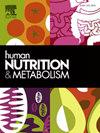腰-甘油三酯指数、甘油三酯-葡萄糖指数及相关指数在尼泊尔成年人代谢综合征检测中的诊断潜力:一项横断面研究
IF 1.8
Q3 ENDOCRINOLOGY & METABOLISM
引用次数: 0
摘要
代谢综合征(MetS)是一个主要的公共卫生问题,与心脏代谢疾病的风险升高有关。传统的met诊断标准需要多种临床和生化测量,这限制了在资源有限的情况下的可行性。新的人类代谢指标为风险预测和分层提供了一种简化的替代方法。本研究旨在评估甘油三酯-葡萄糖(TyG)指数、腰围-甘油三酯指数(WTI)及其衍生物TyG-腰围(TyG- wc)、TyG-腰高比(TyG- whtr)和TyG-体重指数(TyG- bmi)在尼泊尔成年人met风险检测中的诊断性能。对从尼泊尔博卡拉马尼帕尔教学医院招募的1116名成年人(424名女性,692名男性)进行了横断面研究。收集基线社会人口学、人体测量学和生化数据。MetS是根据国家胆固醇教育计划成人治疗小组III (NCEP ATP III)标准定义的。使用标准公式计算指标,并使用Spearman相关、多变量logistic回归和受试者工作特征(ROC)曲线分析检验其与MetS的相关性。所有指标对met的检测均显示出显著的诊断能力(p <;0.001)。TyG指数的总体准确度最高,女性的曲线下面积(AUC)为0.920,男性为0.874。在最佳性别特异性截止点(女性≥8.66,男性≥8.87),TyG表现出优异的敏感性(女性:88.40%,男性:85.55%)和特异性(女性:88.00%,男性:81.20%)。WTI和TyG-WC分别在识别高甘油三酯血症和中心性肥胖方面表现出很强的性能。Logistic回归证实TyG指数是MetS最强的独立预测因子(调整优势比(AOR)):女性= 58.59,男性= 30.94,p <;0.001)。高血压和低高密度脂蛋白胆固醇(HDL-C)的预测准确性较低。对比AUC分析显示,女性的指数变异性大于男性。发现TyG、TyG- wc和WTI是尼泊尔成年人诊断met及其组成部分的强大的、针对性别的工具。它们的简单性、可负担性和高诊断准确性支持将其整合到资源有限的环境中进行大规模met筛查。按性别划分的临界值提高了风险评估的准确性,强调了量身定制筛查策略的必要性。本文章由计算机程序翻译,如有差异,请以英文原文为准。
Diagnostic potential of waist–triglyceride index, triglyceride–glucose index and related indices for the detection of metabolic syndrome in Nepali adults: A cross-sectional study
Metabolic Syndrome (MetS) is a major public health concern associated with elevated risk of cardiometabolic diseases. Conventional diagnostic criteria for MetS require multiple clinical and biochemical measurements, limiting feasibility in resource-constrained settings. Novel anthropo-metabolic indices offer a simplified, surrogate approach for risk prediction and stratification. This study aimed to evaluate the diagnostic performance of the triglyceride-glucose (TyG) index, waist-triglyceride index (WTI), and their derivatives TyG-waist circumference (TyG-WC), TyG-waist-to-height ratio (TyG-WHtR), and TyG-body mass index (TyG-BMI) for detecting the risk of MetS in Nepali adults.
A cross-sectional study was conducted among 1116 adults (424 females, 692 males) recruited from the premises of Manipal Teaching Hospital, Pokhara, Nepal. Baseline sociodemographic, anthropometric, and biochemical data were collected. MetS was defined using National Cholesterol Education Program Adult Treatment Panel III (NCEP ATP III) criteria. Indices were calculated using standard formulae and their associations with MetS were examined using Spearman's correlation, multivariable logistic regression, and receiver operating characteristic (ROC) curve analyses.
All indices demonstrated significant diagnostic capability for the detection of MetS (p < 0.001). The TyG index showed the highest overall accuracy, with area under the curve (AUC) of 0.920 in females and 0.874 in males. At optimal sex-specific cutoffs (≥8.66 for females, ≥8.87 for males), TyG demonstrated excellent sensitivity (female: 88.40 %, male: 85.55 %) and specificity (female: 88.00 %, male: 81.20 %). WTI and TyG-WC showed strong performance in identifying hypertriglyceridemia and central obesity, respectively. Logistic regression confirmed the TyG index as the strongest independent predictor of MetS (adjusted odds ratio (AOR): females = 58.59, males = 30.94, p < 0.001). Predictive accuracy was lower for hypertension and low high density lipoprotein cholesterol (HDL-C). Comparative AUC analysis revealed greater index variability among females than males.
The TyG, TyG-WC and WTI are found to be robust, gender-specific tools for diagnosis of MetS and its components in Nepali adults. Their simplicity, affordability and high diagnostic accuracy support their integration into large-scale MetS screening in resource-limited settings. Sex-specific cutoffs enhance the precision of risk assessments, emphasizing the need for tailored screening strategies.
求助全文
通过发布文献求助,成功后即可免费获取论文全文。
去求助
来源期刊

Human Nutrition and Metabolism
Agricultural and Biological Sciences-Food Science
CiteScore
1.50
自引率
0.00%
发文量
30
审稿时长
188 days
 求助内容:
求助内容: 应助结果提醒方式:
应助结果提醒方式:


